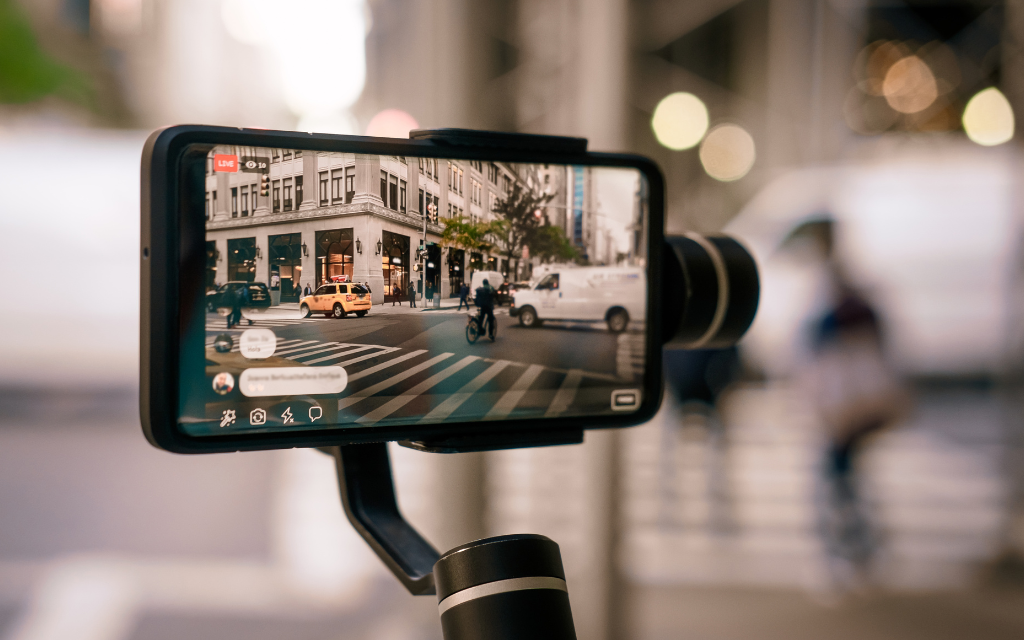What Is Computational Photography?

Computational photography is a branch of photography that combines digital image processing techniques with advanced algorithms to enhance and optimize the quality of photographs. It involves leveraging the power of software and computational algorithms to improve various aspects of image capture and processing - whoa.
Okay, let’s simplify. Picture this: computational photography is like having a tiny photography genius living inside your smartphone. It's a fancy term for the clever tricks and smart algorithms that make your smartphone camera take amazing photos! You see, traditional cameras rely solely on hardware to capture images, but smartphones take it a step further. They use the power of software and fancy math to enhance and optimize your photos in ways that old-school cameras can only dream of.
Why is this important? Well, let's start with low-light situations. Have you ever tried taking a photo at a dimly lit restaurant or during a beautiful sunset, only to end up with a grainy, dark mess? Computational photography comes to the rescue! It cleverly combines multiple exposures of the same scene and magically creates a well-balanced image with stunning details, even in low light. Say goodbye to blurry and noisy photos!
But that's not all. Computational photography also works its magic with dynamic range. Have you ever tried taking a photo of a bright, sunny landscape only to find that the sky is overexposed and the foreground is too dark? With computational photography, your smartphone can capture multiple shots with different exposure levels and merge them together seamlessly. The result? A perfectly balanced photo with details in both the bright sky and the shaded areas. It's like having your own personal photo editor right in your pocket!
And let's not forget about portrait mode. You know, that fancy feature that blurs the background and makes your subject pop like a pro? Yep, computational photography is behind that too. By analyzing depth information and applying some clever algorithms, your smartphone can create that gorgeous, professional-looking bokeh effect, even without expensive lenses. Say cheese, because you're about to take some seriously Instagram-worthy portraits!
So, why is computational photography important for smartphones? It's because it takes your everyday photos to a whole new level. It turns challenging lighting situations into opportunities for stunning shots. It brings out details and balances the exposure like a pro photographer. It lets you capture beautiful portraits that make your friends go "wow!" With computational photography, your smartphone becomes a powerful tool for creating breathtaking images, making your memories even more vibrant and share-worthy.

What are some examples of these techniques and algorithms?
High Dynamic Range (HDR): Computational photography can capture multiple exposures of a scene and merge them together to create an image with a wider dynamic range. This technique helps preserve details in both bright and dark areas of a photo, resulting in a more balanced and visually appealing image.
Image Stacking: By combining multiple images of the same scene, computational photography can reduce noise, improve sharpness, and enhance details. This technique is particularly useful in low-light situations where capturing a single noise-free image is challenging.
Night Mode: Many smartphones now include a Night mode feature that uses computational photography techniques to capture better low-light photos. Night mode typically involves capturing multiple exposures and intelligently merging them to reduce noise, enhance brightness, and improve overall image quality.
Portrait Mode: Computational photography enables the popular Portrait mode feature, which uses depth information to create a shallow depth-of-field effect, blurring the background and highlighting the subject. This technique simulates the bokeh effect achieved with professional cameras and lenses.
Smart Image Processing: Computational photography algorithms analyze the captured image data to automatically optimize various aspects, such as exposure, color balance, noise reduction, and sharpening. These intelligent adjustments help produce visually pleasing and well-balanced photos without requiring manual tweaking.
Super-Resolution: By utilizing advanced algorithms, computational photography can enhance the resolution of images beyond the capabilities of the camera hardware. This technique employs sophisticated upscaling techniques to produce sharper and more detailed images.
So, whether you're capturing magical moments in low light or preserving the beauty of landscapes with remarkable dynamic range, when you’re using your smartphone to capture photos and videos, you’re probably using the power of computational photography.
Looking to upgrade our smartphone to take advantage of the latest camera and video features? Check out Frank Mobile for premium refurbished smartphones. All smartphones at Frank come with a battery health guarantee and 12 month warranty.



